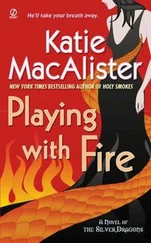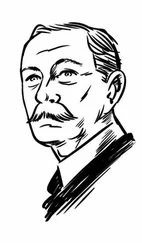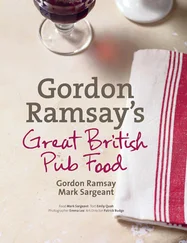Even so, we now had this vast loan, with monthly interest payments to go with it. So you didn’t have to be a partner in super-league finance like Blackstone to realize that, having bought this tiny little restaurant, we urgently needed to get it open. We now had a staff ready and waiting, because forty-six of them walked out of Aubergine when Giuliano Lotto sacked Marcus Wareing. We certainly had our menus set out, but we needed to make the restaurant look right – and there wasn’t much time.
We decided to get help from a small interior design firm that I had come across on an earlier project. The problem was that, years earlier, Pierre Koffmann had commissioned David Collins, who was then unknown, to design his restaurant, and his design had become so much a part of La Tante Claire and its cuisine that, inevitably, everything had to come out. This left a concrete shell and just thirty days to build something in its place.
The concrete shell is always going to haunt me. No one really knows what makes a restaurant successful. There are only a few real variables: the food, the location, the design, the price, the staff, the ambience and the clientele. But every time you think it can’t be too difficult to crack the code, up pops a restaurant that should fail because the food is overpriced and atrocious, the location is in the middle of a railway arch, the staff are arrogant arseholes or the clientele is fickle – and they have to eat in a concrete shell. We all know of examples. The amazing and galling thing is that sometimes they don’t fail.
So here we were, spending enough money on a designer to pay the gross national product of some African country while we knew of a famous fish restaurant on 55th Street in New York that is full every lunch and dinner in its original concrete shell. But then, I also know of a restaurant where the food is not fit for a dog, the fit-out cost 5 million quid and the tables are booked like Wembley for the Cup Final.
So, on balance, we had to do something about the walls at Royal Hospital Road . We needed to extract some kind of ambience out of this concrete, and I hadn’t a clue how to do that. The interior design firm came up with their ideas, simple and uninspiring, but easy to fabricate and install. Their one creative touch was to introduce us to an artist called Barnaby Gorton, who painted a large, dreamy figurescape in blue and grey for a bargain £ 10,000. His vision, speed and enthusiasm meant that we hung on to him for the future. It was a pattern that we followed with a range of people we were to meet later, and who became part of our team for years to come.
Even so, the timetable was fucking tight, and half an hour before we opened for our first evening service, the front desk was still being put together, the carpet was being vacuumed and the glasses polished. The night before, it suddenly occurred to me that the dining room was desperately bleak. There was empty shelving in recesses, and I remember coming up with some appropriate language for the fuckpots who had moved on from their design mission and forgotten the last chapter of their brief.
I called Chris, and he immediately took from his flat a collection of Murano glass. Just for the opening week, of course, until we could find something else, except that it stayed there for five years and became an iconic part of Royal Hospital Road .
In many ways, the building was the easiest part. We just had to get the builders to perform, and they did so with all the usual sucking of teeth, streams of tea and stonewalling of any question that required the answer: ‘Yes, we will finish on time.’ The transferring of staff from their Aubergine existence to Royal Hospital Road had been a sensitive part of this journey. When the crunch came and everyone walked away from Aubergine after the Marcus Wareing fiasco, the only meeting place we had was Chris’s flat in Mayfair.
There we all sat around this vast oak table looking with ashen faces at Chris, who was about to announce the new dawn. I often think back to that evening. Chris was sitting there in front of them, having just agreed to move forward with this unlikely band of refugees from Aubergine , all looking imploringly at him. They needed to know that, shortly, they would be transferring to Chelsea in peace and without the Italians. I don’t know what he was thinking, but it must have been nerve-racking for him, too. One of the partners in our firm of lawyers, Joelson Wilson & Co., who had known Chris for twenty years, asked him if he was sure he knew what he was doing. Nothing like a positive, well-timed question to boost morale.
The first few nights were soft openings to welcome family, friends and staff. These were dress rehearsals to give everyone confidence in what they were doing and to find the rhythm and flow between kitchen and dining room that you need in a well-run restaurant. By the time the first till-ringing night was upon us, we were ready. It was an exciting moment, and it was then – at about 8 p.m. – that the air conditioning suddenly went down in the kitchen and the temperature rose to a sweltering forty-five degrees. There was nothing to do but get on with it and wait for the engineers in the morning.
By midnight, sweaty from the kitchen, we were able to count our first day’s takings. By the end of the first month, September 1998, we had made money. Of course, that didn’t even come near to writing off the capital expenditure, but we knew we had a business that was making a trading profit, and this was a fucking great relief so early on. Within six months, we were clearing £ 50,000 every month, and our debt to the bank was beginning to come down. It meant we were able to draw the £ 175,000 from cash flow to pay the final tranche to Pierre Koffmann and thank him for his patience. The other indicator of success was that our reservations book was stuffed solid. I had restricted the bookings to one month ahead. I had learned from my Aubergine days that a reservations book without any time limit gave people the impression that they would never get a table, so they often simply gave up.
The whole concept of reservations is always tricky. You need a definite policy so that guests know the score. All sorts of myths have grown up around the reservations books of popular restaurants. Try calling The Ivy for a table at eight o’clock tomorrow evening, and all they will want to know is who you are. No fame is no name, and your chances of a table between the hours of six o’clock and 10.30 p.m. are slim. It became a joke at Aubergine that reservations could be bought or sold on a commodity market so that punters had to pay money to someone else – I never saw it – just to book a table, which ought to be free. No different to touts outside Twickenham, Wimbledon or Wembley.
Just as The Ivy sees celebrity table allocations as a commercial way to make the restaurant work, we had to have a plan, too. And it needed to be flexible. Think of table arrangements on two of the year’s big restaurant dates, St Valentine’s Day and Mothering Sunday. Who wants a table for four on St Valentine’s Day? The reservations manager has to plan ahead to get as many twos in as possible. Mothering Sunday is a family day, and suddenly, we need tables of four and upwards. Outside these special days, there has to be a balance of twos, fours and more. Too many twos need a lot of space, more laundry, more staff, and usually less money is spent on drink – and that’s a problem. Tables of four usually mean higher drinks bills. More guests bring a bonhomie, which means more wine being poured.
And whatever happened to the table for one? That’s always there in my restaurants. It’s never going to be a money-spinner, but any restaurant that refuses a single guest for a booking shouldn’t be in the business. Few people eat on their own in a restaurant, but there are some blessed people who come just to taste the food. What greater compliment can there be? One of Chris’s old haunts is a wonderful, laid-back restaurant called Rules , serving some great British dishes – coincidentally, it’s London’s oldest eating establishment – and there is a table that only accommodates one guest. I have never seen that table empty.
Читать дальше












